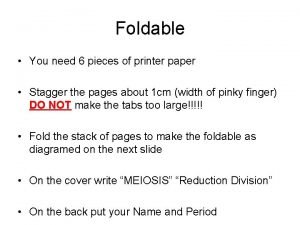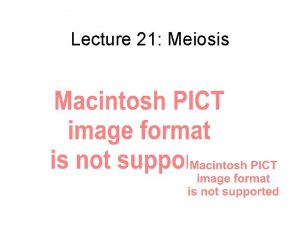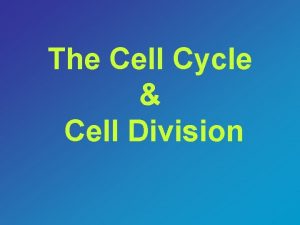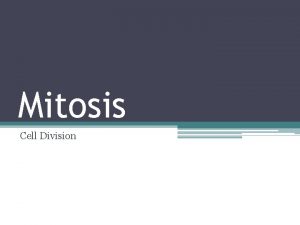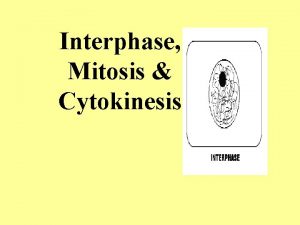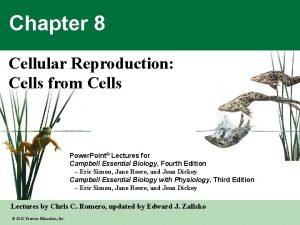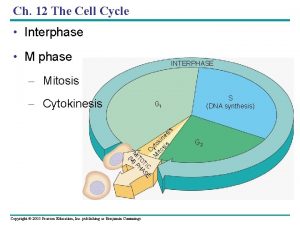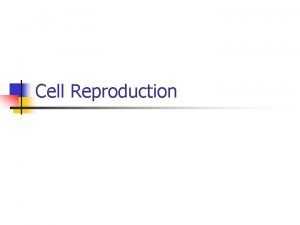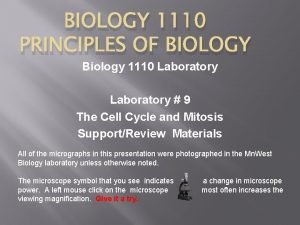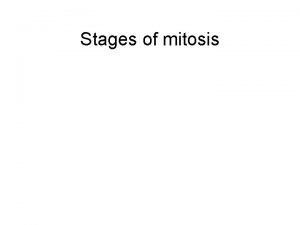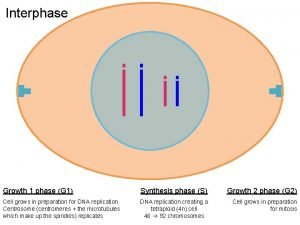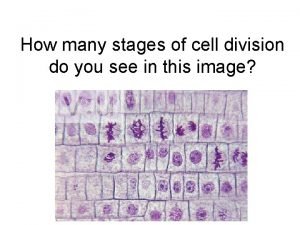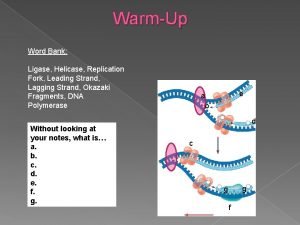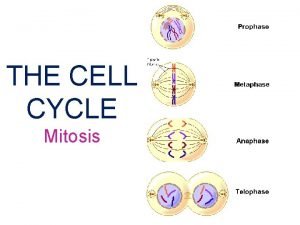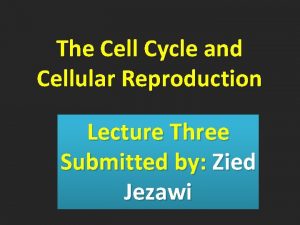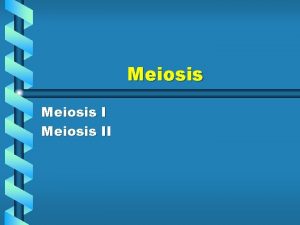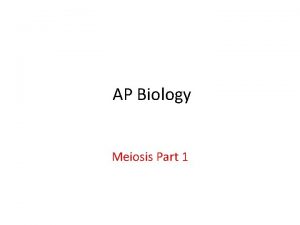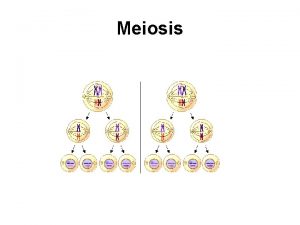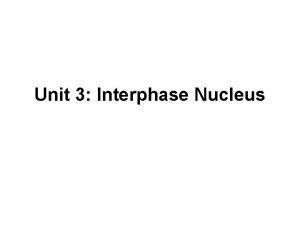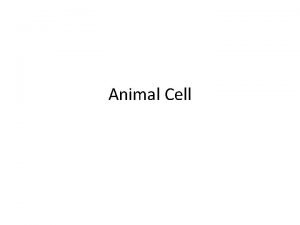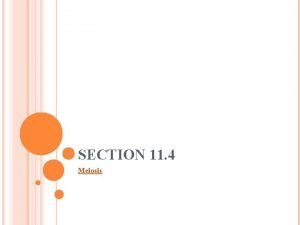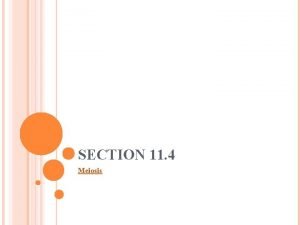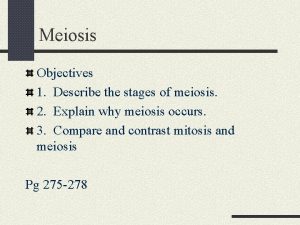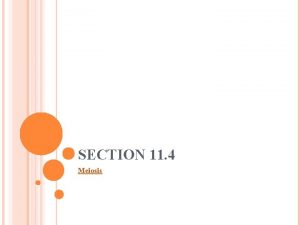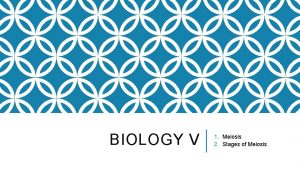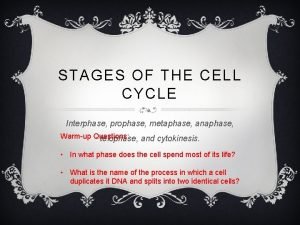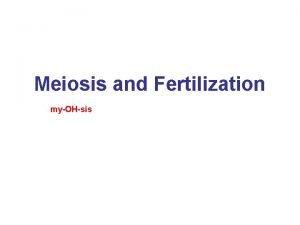STAGES OF MEIOSIS MODELING MEIOSIS ACTIVITY INTERPHASE I


















- Slides: 18

STAGES OF MEIOSIS MODELING MEIOSIS ACTIVITY

INTERPHASE I • Similar to mitosis interphase. • Chromosomes replicate (S phase). • Each duplicated chromosome consist of two identical sister chromatids attached at their centromeres • Centriole pairs also replicate. • Nucleus and nucleolus visible.

PROPHASE I • Longest and most complex phase (90%). • Chromosomes condense. • Synapsis occurs: homologous chromosomes come together to form a tetrad • Tetrad is two chromosomes or four chromatids (sister and nonsister chromatids). Homologous chromosomes Tetrad sister chromatids

Homologous Chromosomes: Locus= location of gene eye color locus hair color locus Paternal Maternal

CROSSING OVER (PROPHASE I) • Crossing over (variation) may occur between nonsister chromatids at the chiasmata • Crossing over: over segments of nonsister chromatids break and reattach to the other chromatid • Chiasmata (chiasma) are the sites of crossing over

Crossing Over - variation nonsister chromatids chiasmata: site of crossing over Tetrad variation

Prophase I spindle fiber aster fibers centrioles

METAPHASE I • Shortest phase • Tetrads align on the metaphase plate • INDEPENDENT ASSORTMENT OCCURS: 1. Orientation of homologous pair to poles is random. 2. Variation

Metaphase I OR metaphase plate

ANAPHASE I • Homologous chromosomes separate and move towards the poles. • Sister chromatids remain attached at their centromeres

TELOPHASE I • Each pole now has haploid set of chromosomes • Cytokinesis occurs and two haploid daughter cells are formed.

Telophase I

MEIOSIS II No Interphase II Remember: Meiosis II is similar to mitosis

Prophase II • same as prophase in mitosis

Metaphase II • same as metaphase in mitosis metaphase plate

Anaphase II • same as anaphase in mitosis • sister chromatids separate

TELOPHASE II • Same as telophase in mitosis • Nuclei form. • Cytokinesis occurs. • Remember: four haploid daughter cells produced. gametes = sperm or egg

Telophase II
 Meiosis diagram with labels
Meiosis diagram with labels Meiosis
Meiosis Helen c. erickson
Helen c. erickson Relational modeling vs dimensional modeling
Relational modeling vs dimensional modeling Interphase prophase metaphase anaphase telophase
Interphase prophase metaphase anaphase telophase Interphase of cell cycle
Interphase of cell cycle Dna scrunches up and chromosomes are first visible
Dna scrunches up and chromosomes are first visible Meiosis homologous chromosomes
Meiosis homologous chromosomes Phases of interphase
Phases of interphase Interphase mitosis
Interphase mitosis During interphase a cell grows, duplicates organelles and
During interphase a cell grows, duplicates organelles and Interphase
Interphase Whitefish interphase
Whitefish interphase Interphase
Interphase Interphase growth 1
Interphase growth 1 Interphase
Interphase Interphase animal cell
Interphase animal cell Mitosis cytokinesis
Mitosis cytokinesis Cell in interphase labeled
Cell in interphase labeled
